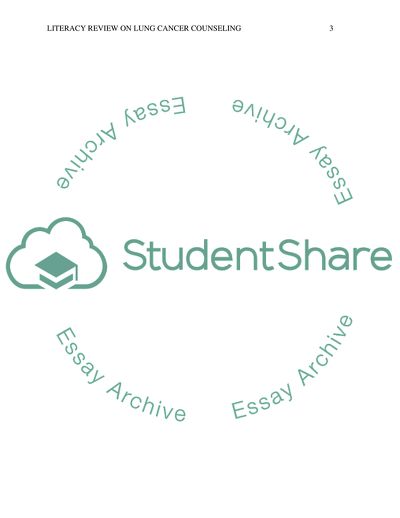Cite this document
(Review on Lung Cancer Counseling Literature Example | Topics and Well Written Essays - 1750 words, n.d.)
Review on Lung Cancer Counseling Literature Example | Topics and Well Written Essays - 1750 words. https://studentshare.org/health-sciences-medicine/1845952-literacy-review-on-lung-cancer-counseling-counseling-patients-with-lung-cancer
Review on Lung Cancer Counseling Literature Example | Topics and Well Written Essays - 1750 words. https://studentshare.org/health-sciences-medicine/1845952-literacy-review-on-lung-cancer-counseling-counseling-patients-with-lung-cancer
(Review on Lung Cancer Counseling Literature Example | Topics and Well Written Essays - 1750 Words)
Review on Lung Cancer Counseling Literature Example | Topics and Well Written Essays - 1750 Words. https://studentshare.org/health-sciences-medicine/1845952-literacy-review-on-lung-cancer-counseling-counseling-patients-with-lung-cancer.
Review on Lung Cancer Counseling Literature Example | Topics and Well Written Essays - 1750 Words. https://studentshare.org/health-sciences-medicine/1845952-literacy-review-on-lung-cancer-counseling-counseling-patients-with-lung-cancer.
“Review on Lung Cancer Counseling Literature Example | Topics and Well Written Essays - 1750 Words”. https://studentshare.org/health-sciences-medicine/1845952-literacy-review-on-lung-cancer-counseling-counseling-patients-with-lung-cancer.


